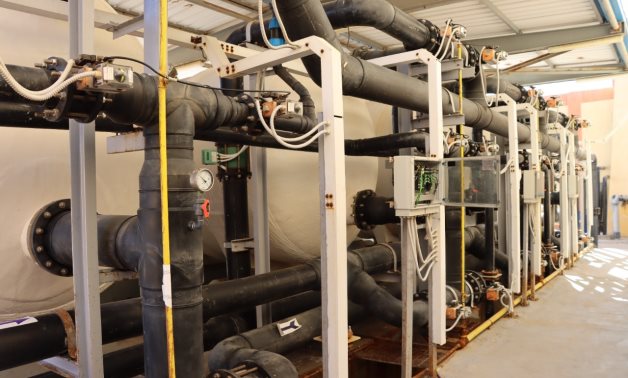
The Race for Clean Water: Impressive Desalination Innovations

The Sustainable Development Goals were adopted by the United Nations in 2015 as a universal call to action to ensure that by 2030, all people in the world enjoy peace and prosperity. The SDGs include 17 main goals that the UN seeks. Goal No. 6 stipulates "Ensure availability and sustainable management of water and sanitation for all." Although notable progress has been made, water stress and scarcity remain concerns in many parts of the world.
Currently, two billion people still lack access to safely managed water, and more than 700 million people could be displaced due to severe water stress by 2030. And according to a 2019 report prepared by UNICEF, every year, 85,700 children die from diarrhea linked to unsafe water, sanitation, and hygiene facilities.
However, impressive inventions have made progress in providing low-cost desalinated drinking water to communities worldwide, learn about the most impactful ones below:
Water Desalination in Morocco
Morocco heavily relies on rainwater for drinking and agriculture, but these supplies are not guaranteed every year, impacting the country's vital agricultural sector. To address this, the government is accelerating its plans to establish seawater desalination plants for domestic water supplies. Currently, Morocco has 14 water desalination plants with an annual capacity of 192 Million cubic meters and aims to increase this to 36 plants.
Small, decentralized systems powered by solar energy prove effective in providing fresh water to remote and isolated communities. One such example is the solar-powered water desalination project in Agadir, built by the Spanish company Abengoa. Construction began in 2015 and was completed in 2022. This project produces 100,000 CM cubic meters of water daily, meeting the needs of over 500,000 people – more than Agadir's population.
The plant employs ultrafiltration pre-treatment systems and reverse osmosis technology for seawater desalination, allowing energy to be recovered and having a positive impact on the cost of energy, which is reduced by about 43% per CM produced.
Water Desalination in Egypt
Despite having the Nile River, the second longest river in the world, Egypt faces water stress. In 2018, the per capita water share was only about 570 CM, a number expected to decrease due to population growth, drought, and climate change. As a result., the Egyptian government is developing a long-term plan for seawater desalination, aiming to establish new plants capable of desalinating 9 MCM of water per day by 2050 when the population is projected to reach 160 million. Most of these plants are being built and planned in new cities along the Red Sea and Mediterranean coasts.
MIT Solar-Powered System for Affordable Water Desalination
Engineers at MIT and in China are working on a small passive device that desalinates seawater using direct solar energy, in a manner similar to the thermohaline circulation of the ocean. The device is estimated to produce 4 to 6 liters of desalinated water per hour and operate for several years before requiring replacement parts. This makes it suitable for use by remote and isolated communities.
The primary challenge encountered by similar systems employing a wick mechanism is salt accumulation, which gradually reduces system efficiency. However, researchers from MIT and China have devised a solution to this issue, resulting in a more efficient and cost-effective system compared to previous versions. The team estimates that the materials required to produce a device covering 1 square meter cost only $4.
According to Hadi Ghasemi, a professor of chemical and biomolecular engineering, this innovative system "offers a promising and efficient path for desalinating high salinity solutions."
While there is no set timeline for commercial deployment of this device, scientists are actively refining it and anticipate its availability within a few years.
Fog Collection Techniques
Many desert communities use primitive methods for fog collection on cold surfaces. Fog naturally condenses under suitable conditions, such as high humidity and cold offshore currents. These methods can be modified to enhance effectiveness by utilizing vertical mesh netting, allowing the fog droplets to flow down towards a trough below. While this technique is not applicable in all environments and is not practical for large-scale water production, it can be an excellent solution in emergency situations.
In conclusion, in a world grappling with water scarcity due to limited water sources, climate change, and drought, innovative solutions for providing clean water to deprived communities have become an urgent necessity. We discussed the efforts of Morocco and Egypt in establishing desalination plants to meet their communities' water needs. Additionally, we explored MIT's project aiming to develop a portable water desalination system that can assist isolated communities in securing their water needs. Finally, we learned about fog collection techniques. However, these changes should be accompanied by responsible consumption patterns by households and the commercial sector and ongoing awareness-raising efforts in addition to responsible management between neighboring countries of shared natural resources such as rivers.
Recommended Articles

10 Easy Ways to Use Less Water in Your Daily Life
Water is a vital part of our lives, but climate change is here and is impacting our access to sufficient water supplies. And while our water resources are decreasing, we are also increasing in numbers.

How Can we Make Our Rivers Cleaner and Create Awareness
The River Nile, hit hard by pollution. It is well known that Herodotus, an ancient Greek historian who is regarded as the ''Father of History,” famously called Egypt ‘the gift of the Nile’. The ancient old country has historically depended on the Nile to build its magnificent civilization, and till today the Nile remains its main source of water supply.

Saving Water in Your Home: Smart Water Conservation Systems You Can Use
While domestic water use only represents 8-10% of total global water consumption, every drop counts in countries facing severe water stress, such as Egypt and Morocco.

Panel Discussion held for Students on Climate Change And Water Scarcity at the EduTech Fair in Egypt
Over twenty technical school students attended a panel discussion organized by the European Union Climate Dialogue and the European Union on the 18th of April 2024 during the EduTech Fair in Cairo, Egypt.

Dune 2: Lessons in Water Conservation and Conservative Principles
The recent release of Dune: Part Two brings Frank Herbert's universe to life, emphasizing the preciousness of water on Arrakis. The film further explores the journey of Paul Atreides and the ingenious water conservation techniques of the Fremen, such as stillsuits and water discipline, highlighting their relevance to our current environmental challenges.

The Race for Clean Water: Impressive Desalination Innovations
The Sustainable Development Goals were adopted by the United Nations in 2015 as a universal call to action to ensure that by 2030, all people in the world enjoy peace and prosperity. The SDGs include 17 main goals that the UN seeks. Goal No. 6 stipulates "Ensure availability and sustainable management of water and sanitation for all." Although notable progress has been made, water stress and scarcity remain concerns in many parts of the world.